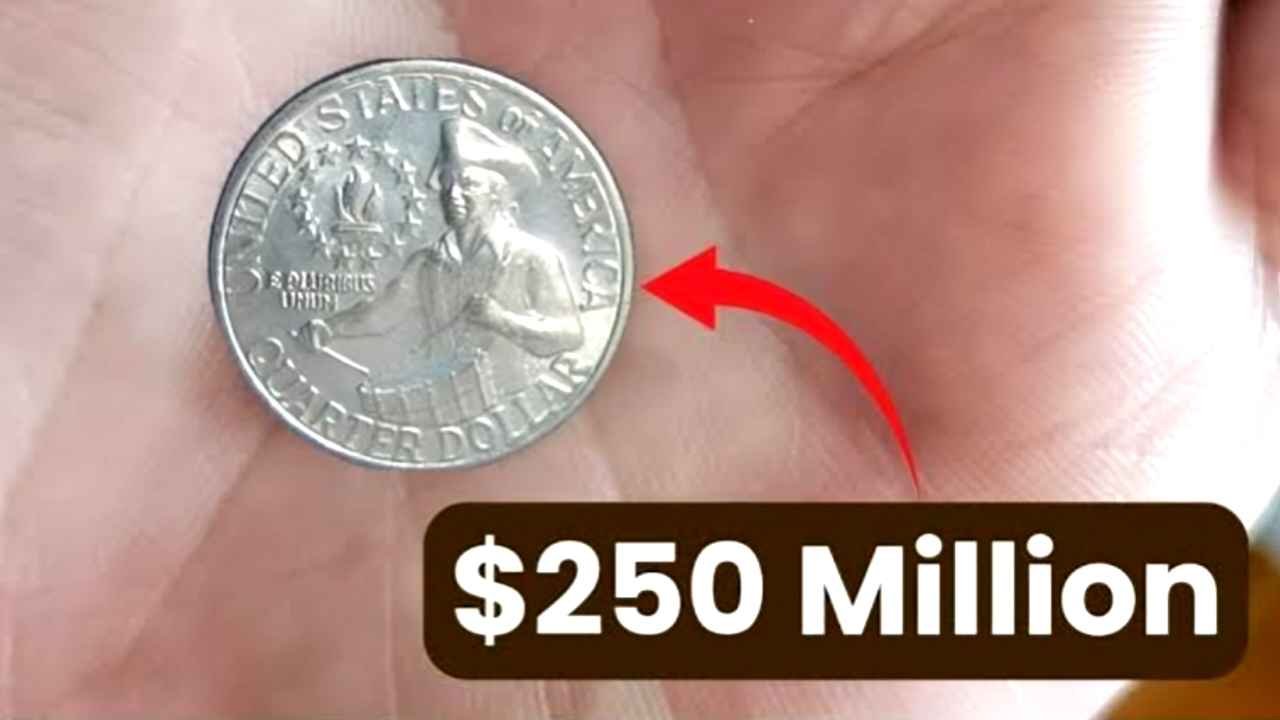10 Rare Dimes and Bicentennial Coins Worth $250 Million Each
In the world of coin collecting, rare finds can turn an ordinary day into an extraordinary one. Some coins that look like everyday pocket change can actually be worth a fortune. Surprisingly, 10 rare dimes and Bicentennial coins are each estimated to be worth $250 million. These coins are not just valuable because of age, but because of errors, low mintage, and historical significance.
Let’s explore which coins made this list, why they are so valuable, and how you can check if you might own one without even knowing it.
Rare Coins Overview Table
| Coin Name | Estimated Value | Year Minted | Reason for Rarity |
|---|---|---|---|
| 1894-S Barber Dime | $250 Million | 1894 | Only 24 minted |
| 1975 No-S Roosevelt Dime | $250 Million | 1975 | Mint error, missing mintmark |
| 1796 Draped Bust Dime | $250 Million | 1796 | First dime ever made |
| 1874-CC Liberty Seated Dime | $250 Million | 1874 | Carson City rarity |
| 1916-D Mercury Dime | $250 Million | 1916 | Low mintage from Denver Mint |
| 1976-S Bicentennial Proof Dollar | $250 Million | 1976 | Ultra-rare silver proof |
| 1976 Bicentennial Quarter Error | $250 Million | 1976 | Double die and off-center error |
| 1804 Draped Bust Dollar | $250 Million | 1804 | Extremely rare, collector’s treasure |
| 1838-O Capped Bust Half Dollar | $250 Million | 1838 | Very limited New Orleans issue |
| 2000-P Sacagawea Dollar Mule | $250 Million | 2000 | Error coin with mismatched dies |
What Makes These Coins Worth $250 Million? – Rarity and Historical Importance
Many people wonder how a small dime or quarter can be worth hundreds of millions of dollars. The answer lies in a combination of rarity, minting mistakes, collector demand, and historical significance.
Coins like the 1894-S Barber Dime were minted in such low numbers (only 24!) that even finding one is like winning the lottery. Others, like the 1975 No-S Roosevelt Dime, were produced with minting errors that make them extremely rare.
The Bicentennial coins from 1976 are also valuable, especially if they have proof finishes or mint errors. Some collectors are willing to pay any amount for these unique items, driving up their value astronomically.
How to Identify a Rare Dime or Bicentennial Coin at Home
You might think it’s impossible to find something this rare in your pocket or coin jar, but there have been cases where everyday people found million-dollar coins in rolls from the bank or family heirlooms.
Here’s what you can do:
-
Check the Date – Look for years like 1894, 1916, 1975, or 1976.
-
Look for Mint Marks – D (Denver), S (San Francisco), or no mint mark.
-
Inspect for Errors – Off-center designs, double strikes, or mismatched elements.
-
Condition Matters – Coins in better condition are always worth more.
-
Use a Magnifier – Tiny details matter in spotting valuable coins.
If you suspect a coin is rare, don’t clean it. Use gloves and show it to a professional appraiser or numismatist.
Where to Sell or Get a Rare Coin Appraised
If you find a coin that looks valuable, the first step is to get it authenticated. Here’s how:
-
Visit a local coin shop or reputable coin dealer.
-
Attend coin shows where professionals offer free evaluations.
-
Send it to grading companies like PCGS or NGC.
-
Join online collector forums to get community opinions.
-
Avoid pawn shops, as they may not give you a fair value.
Once your coin is certified, you can sell it through auctions, online collectors’ markets, or even private collectors.
Tips for Beginners Interested in Coin Collecting
Coin collecting is a fun and rewarding hobby that could turn into a big win someday. Here are some tips for getting started:
-
Start with what you have – Go through jars, old wallets, and loose change.
-
Focus on a theme – For example, U.S. quarters or dimes from specific eras.
-
Use proper storage – Coin albums or holders protect your collection.
-
Learn the basics – Read coin guides or watch videos from numismatists.
-
Be patient – Rare coins are not found every day, but the hunt is part of the excitement.
You never know when you might come across a coin worth hundreds—or even millions.
FAQs – Rare Dimes and Bicentennial Coins
Q1. What is the rarest dime ever made?
The 1894-S Barber Dime is one of the rarest, with only 24 minted. Today, fewer than 10 are believed to still exist.
Q2. How can I tell if my Bicentennial quarter is valuable?
Check for errors like double-die strikes or missing mint marks. Proof versions with silver content can also be worth significantly more.
Q3. Are all Bicentennial coins valuable?
Not all are rare. Most were mass-produced, but a few proof or error coins from 1976 can be worth millions if authenticated.
Q4. Where can I sell a rare coin?
Certified rare coins can be sold through coin auctions, private collectors, or online numismatic platforms. Always use a trusted source.
Q5. Can I still find valuable coins in circulation today?
Yes! Many valuable coins have been found in circulation, bank rolls, or inherited collections. Always check your change.
Final Thoughts – A Penny Could Be a Treasure
It’s exciting to think that your old change jar or coin album might hold something as incredible as a $250 million coin. While the chances are small, they’re not impossible. The world of rare coins is full of surprises, and anyone could stumble upon a treasure.
If you enjoy history, collecting, or just the thrill of the hunt, start checking your coins today. Who knows? That old dime or Bicentennial quarter you’ve had for years might just be one of the most valuable coins in the world.


